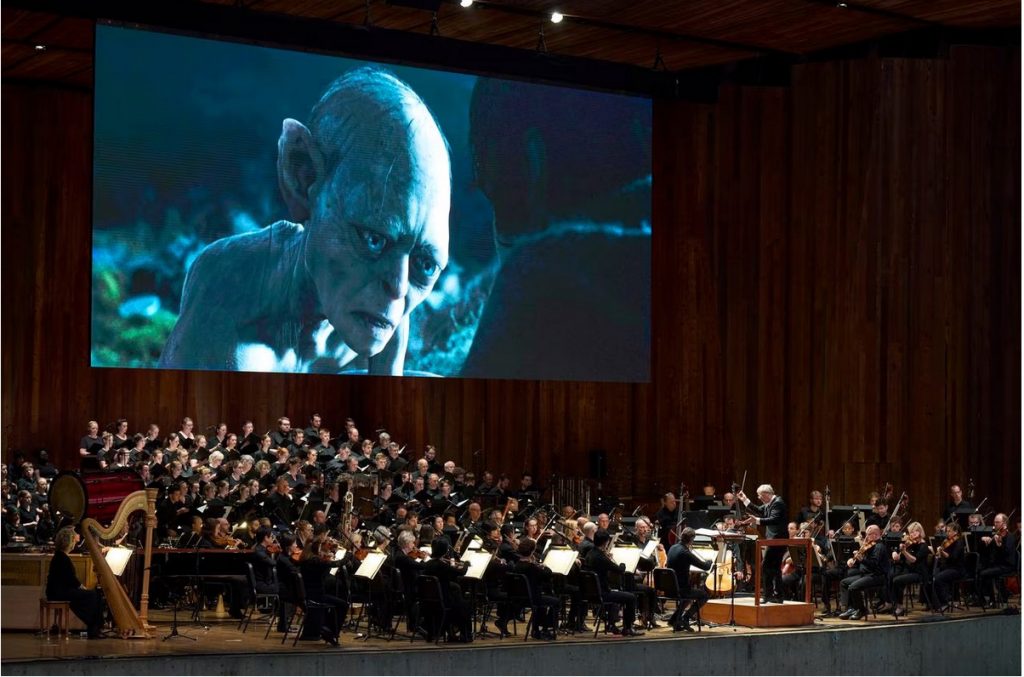This article was originally published on Cleveland.com
The Cleveland Orchestra performs The Lord of the Rings The Two Towers on Friday at the Blossom Music Center.Roger Mastroianni
by Daniel Hathaway
CUYAHOGA FALLS, Ohio — News flash! War broke out here on Friday night as a vast coalition of enemy forces assembled on the Plains of Rohan, surrounded, then stormed the Hornburg, breaching the Deeping Wall during a fierce battle, and forcing its defenders and residents to retreat. The tide finally turned when an army of trees marched into the fray, hurling boulders at the attackers and flooding the battlefield with water from the river Isengard.
Army of trees? I’m not making this up. That would be the Ents — trees that move like men led by Treebeard, who met with his fellows in an Entmoot and deliberated with characteristic slowness whether to react to the assault by the forces of Sauron. Like everything else in the film, the Ents sprang from the fertile imagination of the British philologist J.R.R. Tolkien, whose “Lord of the Rings” trilogy resembles Richard Wagner’s “Ring” cycle of operas not through plagiarism, but because both trace their roots back to a common source — Norse mythology.
Kevin McBrien’s program notes for the Cleveland Orchestra’s “The Lord of the Rings: The Two Towers” program at Blossom Music Center this weekend are interesting in that regard. “When J.R.R. Tolkien discovered that the preface of the Swedish edition of his fantasy trilogy “The Lord of Rings” compared it to Richard Wagner’s “The Ring of the Nibelung,” he reportedly scoffed, ‘Both rings were round and there the resemblance ceases.’”
On Friday evening at the Blossom Music Festival, “The Two Towers,” Peter Jackson’s visually stunning film of the second part of Tolkien’s fantasy trilogy, was projected on a huge screen above conductor Ludwig Wicki as the Cleveland Orchestra, its chorus and children’s chorus richly performed Howard Shore’s score during nearly three and a half hours of riveting action and carnage. Wicki, who is an old hand with the “Ring” scores, matched music to action skillfully.
That took the story of Frodo Baggins and The Ring from the taming of Smeagol (the pitiful, raw fish-eating former owner of The One Ring) to the aftermath of the battle of Rohan and the continuation of Frodo and Samwise’s journey to Mordor to cast the troublesome source of power into the Cracks of Doom and out of Sauron’s hands.
Read the rest of the article here



